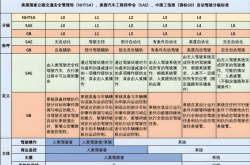Home Appliance Enterprises and Dealers Confront Heightened Market Competition Amid "National Subsidy" Policy
![]() 01/17 2025
01/17 2025
![]() 475
475

Since the dawn of 2025, under the new phase of the comprehensive implementation of the home appliance "national subsidy" policy, anxieties among numerous home appliance enterprises and dealers have escalated. Notably, township dealers have voiced considerable distress. What underlies this phenomenon?
By Ning Yan
There's a mix of emotions: some rejoice, while others lament. Some grieve over not securing the "national subsidy" qualification, while others fret despite obtaining it, finding themselves unable to carve out a market share.
While the home appliance "national subsidy" policy continues in 2025, stimulating consumer purchasing power is undoubtedly a positive development. However, recently, many home appliance dealers' concerns about the impending market trends and competition in 2025 have only intensified:
First, marketing and competitive strategies under the "universal benefit" policy have become highly homogeneous, leading to fierce competition in frontline markets. Second, the consumer market, subjected to long-term policy implementation, is facing fatigue, leaving manufacturers feeling helpless and exhausted.
In recent discussions on market operations and expansion for 2025 within the home appliance industry, many dealers have once again expressed anxiety and pain. On the surface, the continued implementation of the home appliance "national subsidy" policy in 2025 is a significant boon for frontline markets, stimulating consumption and sales, and offering a substantial policy advantage. In reality, however, many home appliance dealers have not witnessed the anticipated "auspicious start" in market operations and expansion since the beginning of the year. Instead, their market experience in operations and competition has been "extremely disappointing".
The primary reason is that, amidst the ongoing implementation of the home appliance "trade-in" national subsidy policy, the industry has observed a "love-hate" mentality among many enterprises and dealers. While some anticipate national subsidies to drive a rebound in market consumption, they find that a series of business difficulties and pain points post-implementation are intensifying. The market pie is being cornered by a handful of large enterprises and major retailers, failing to achieve universal benefits.
Firstly, the continuous overdraft of consumer demand through the home appliance "national subsidy" has led to fierce competition, with businesses struggling to secure market share, and facing the dilemma of being unable to do so. The overall market situation has not witnessed a new wave of robust rebound since the start of 2025, exacerbating businesses' internal anxieties and fears.
Secondly, many home appliance manufacturers in the market do not adhere to the rules, exploiting loopholes in the "national subsidy" policy to fraudulently obtain subsidies. Instead of genuinely stimulating the market, they disrupt and undermine the market's healthy order, creating a scenario where "bad money drives out good money" in the home appliance market.
Thirdly, the home appliance "national subsidy" solely incentivizes consumers to choose level 1 and 2 energy efficiency products. The four-month market practice in 2024 reveals that consumption is accelerating towards mid-to-high-end products from big brands, accelerating market depression and deteriorating business conditions for many small and medium-sized enterprises. Similarly, in the home appliance retail industry, JD.com, Tmall, Pinduoduo, and Suning.com have captured a larger market share, while township dealers mostly share the "leftovers," triggering market "polarization".
Therefore, the auspicious start in February, the prosperous March, and the vibrant April following the 2025 Spring Festival will serve as the "wind vane" that all home appliance manufacturers must strive to capture. This will also spark new business challenges and impacts, necessitating a reevaluation of how to leverage the new cycle of the home appliance "national subsidy" policy to explore and create a new rhythm, new methods, and a new system for market operations.
It's evident that in this year's home appliance market scramble, all manufacturers must not only be "fast, accurate, and fierce" but must also first break through from the perspectives of organizational structure, systems, product planning, channel model optimization within the enterprise, as well as resource allocation such as technology platforms, operating tools, and operating teams, with a focus on users and efficiency.
First, manufacturers and dealers must collaborate to deliver products from the factory to consumers' homes with the utmost efficiency. This necessitates the participation of retailers, retail innovation, and the integration of marketing and services, requiring everyone across the industrial chain to "work together in one direction." Second, enterprises must dare to experiment and make mistakes, earning users' recognition and favor through retailers offering the best experiences, content, scenarios, etc. Winning over users is paramount.
Currently, the home appliance industry believes that the market scramble in 2025 will be more intense and fierce, involving not just one but multiple grueling battles. Preparing for a "protracted war" is imperative!
Disclaimer: Original article by the home appliance industry, strictly prohibited from reprinting without authorization.




